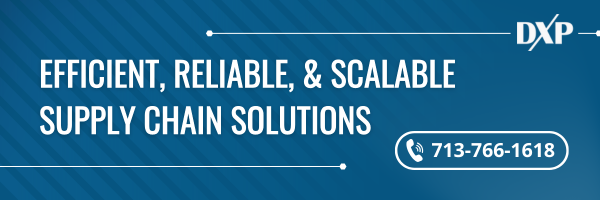
What are the Benefits of Vendor-Managed Inventory Systems for Suppliers?
Managing inventory at the enterprise level is a continuous battle. Demand projections and fluctuating costs make the task incredibly difficult, but strategic integrations between vendors and customers can reduce friction. Consider the benefits of VMI (vendor-managed inventory) for your supply chain.
What is VMI in Supply Chain Management?
Vendor Managed Inventory, or VMI, helps businesses streamline their processes and improve financial performance at each step in the supply chain. VMI involves close strategic relationships between vendors and their customers by putting the vendor in charge of the customer’s inventory.
5 Benefits of Vendor-Managed Inventory
By eliminating process roadblocks and aligning supplier and customer inventory requirements, VMI offers suppliers numerous benefits over traditional supply chain management approaches.
Here are five of the most important.
1. Improved alignment of inventory with customer demand.
In a VMI relationship, the supplier takes charge of replenishment, allowing the supplier to dynamically adjust inventories in response to customer demand. VMI improves the overall supply chain responsiveness to seasonal changes, special promotions, and new initiatives.
By smoothing out the effects of demand variability, suppliers can better coordinate manufacturer lead times. In turn, suppliers can carry a leaner inventory of finished goods. The net effect is lower carrying costs and reduced disruptions from stock-outs and other inefficiencies.
2. Streamlined processes and lower costs.
Because the supplier controls customer inventory in a VMI relationship, the supplier can achieve significant efficiencies. The ordering process is typically based on more accurate and up-to-date data, which allows for cost savings by achieving VMI benefits like these:
- Reducing the frequency of costly last-minute orders
- Reducing the overall number of orders
- Reducing returns due to product replacements
Read Now: Cost Reduction Strategies in Inventory Management
3. Improved inventory management data insights.
A VMI program takes the supplier’s data analytics to new levels of sophistication that feed into its entire operation. The benefits go beyond the warehouse. For example, a better understanding of actual demand helps sales managers improve performance and develop stronger relationships with customers. As customers share more and better data, the supplier’s insights into its marketplace often expand in valuable ways.
4. Closer collaboration with customers.
An effective VMI program develops through cooperation. Suppliers who adopt VMI find that it enhances their relationships with customers, who gain a significant competitive advantage thanks to the superior service and on-time delivery that VMI enables.
Customers quickly recognize that they can leverage their supplier’s VMI program to improve results, both for day-to-day operations and for special programs.
5. Improved sales figures.
As the supplier develops a better understanding of actual customer demand through its VMI process, it becomes a better partner to its customers and, therefore, is more likely to see increased sales. By encouraging greater supply chain transparency and communication, the supplier can better respond to its customers’ conditions and future plans, ultimately helping customers and suppliers alike grow in more efficient and predictable ways.
If you would like to experience the benefits of VMI, please contact us today.

Getting the Most from Vendor Managed Inventory (VMI)
Starting your Vendor Managed Inventory (VMI) process can be a big change for both the supplier and its customer. VMI promises many benefits, like lower carrying costs and a more efficient ordering process.
Numerous strategies can be used to maximize the gains from VMI. Here are three tips vendors and their customers should think about as they plan and execute their VMI program.
Streamline Data Sharing for Success
For VMI to deliver peak performance, the supplier and customer need to be in sync. The tighter data integration can be made, the more effective VMI will become.
In a typical VMI arrangement, the vendor deploys its own inventory management systems at the customer’s location, allowing for direct monitoring of inventory status. Over time, the supplier can use inventory data it collects to improve responsiveness and help the customer identify opportunities for cost savings.
The customer can make the process more effective by providing the supplier with historical information and future projections. Doing so requires the vendor and customer to adopt compatible systems. It also requires trust, with robust protections for the confidentiality of customer information.
Set Clear Objectives for Your VMI Program
VMI works best when the supplier and customer are pulling in the same direction. Both sides in the relationship need to be clear about what their goals are for the program, and the other side needs to understand what those goals are as well.
Goal-setting needs to be realistic and allow for a certain amount of growing pains, especially in the early stages of the process when its full efficiencies have not begun to show.
Assign a Dedicated Team for Optimal VMI Performance
Freeing employees from inventory management duties is one of the key benefits of VMI. But customers should not view VMI as an opportunity to completely relinquish inventory management to the vendor. Instead, the customer should expect to have dedicated staff who are trained to support the process. They can keep an eye on performance, looking for potential improvements and identifying gaps that need to be filled.
Every VMI process needs to be fine-tuned to the needs of customers and vendors. The DXP team of logistics engineers can help an organization of any size adopt a Vendor Managed Inventory program that gets results.
DXP’s proprietary SmartVMI program has a proven track record of improving our customers’ financial performance. Our customized VMI solutions can be tailored to meet the needs of suppliers of any size.
To learn more about DXP’s integrated supply chain services, contact us to schedule a demo.


